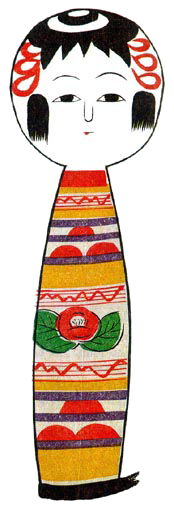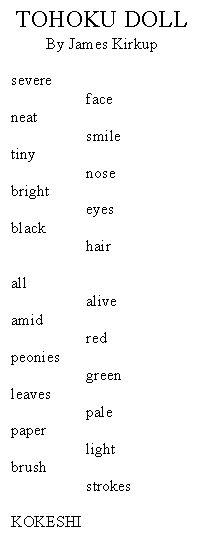Kokeshi dolls
This task is about finding information and understanding the different purposes of texts.
Read the article (The Wooden Dolls of Tohoku) and the poem (Tohuku Doll) and answer the questions that follow.
|
The Wooden Dolls of Tohoku
By Barbara Beveridge
Tohoku is a district in the north-eastern part of Japan. Over a hundred years ago, the woodworkers there started making a special sort of doll for their children. Nowadays, these dolls are famous. They are called "Kokeshi" dolls.
Kokeshi dolls all have a wooden body with a loose-jointed head, and no arms or legs. There are many shapes and sizes. Some are only a few centimetres high; others may be as tall as a metre.
They are painted with flower designs - usually chrysanthemums, apricot blossom, peonies or maple leaves.
The woodworkers of Tohuku are still making Kokeshi dolls - not just for children, but for adults, too. Many people like to collect them.
|
 
|

